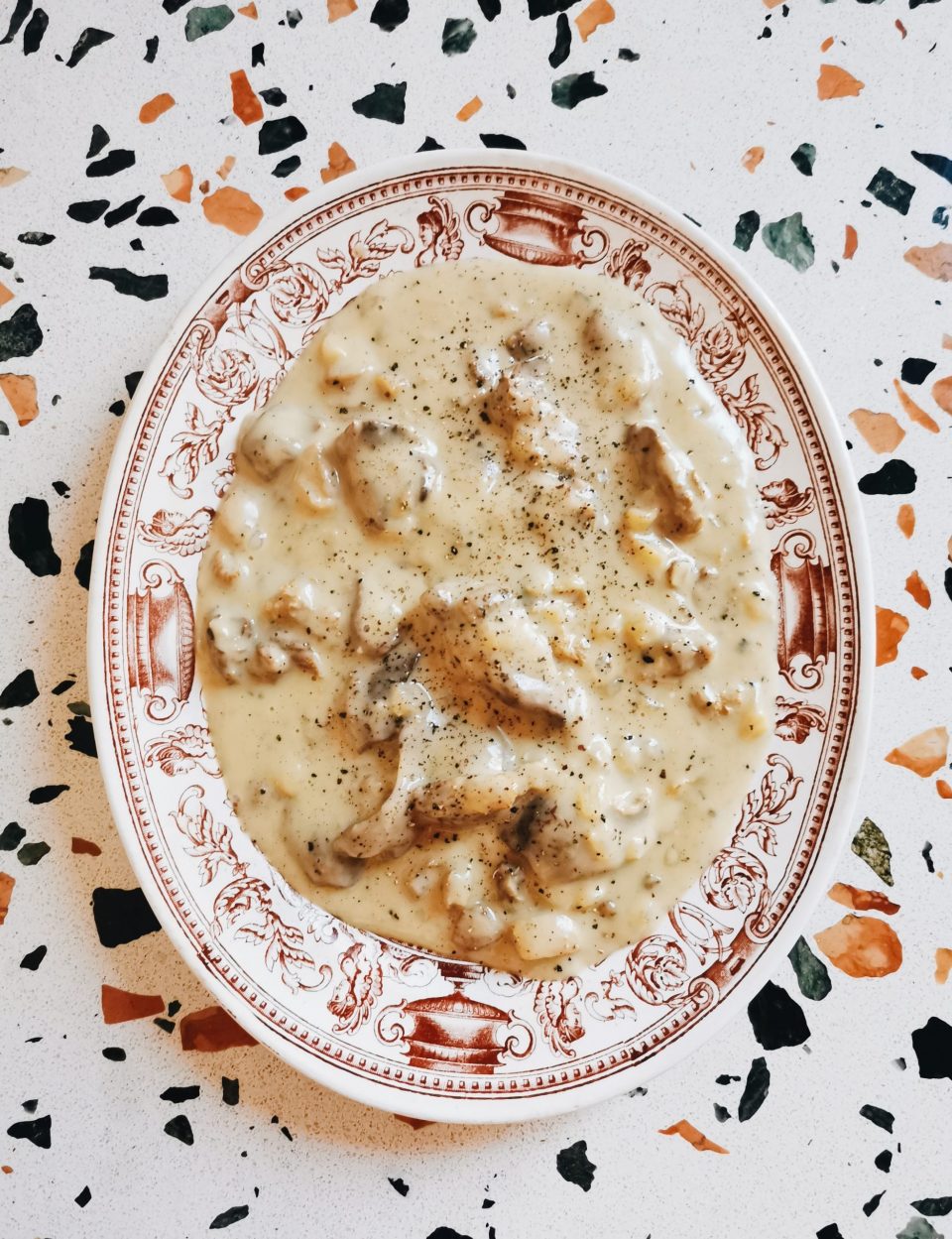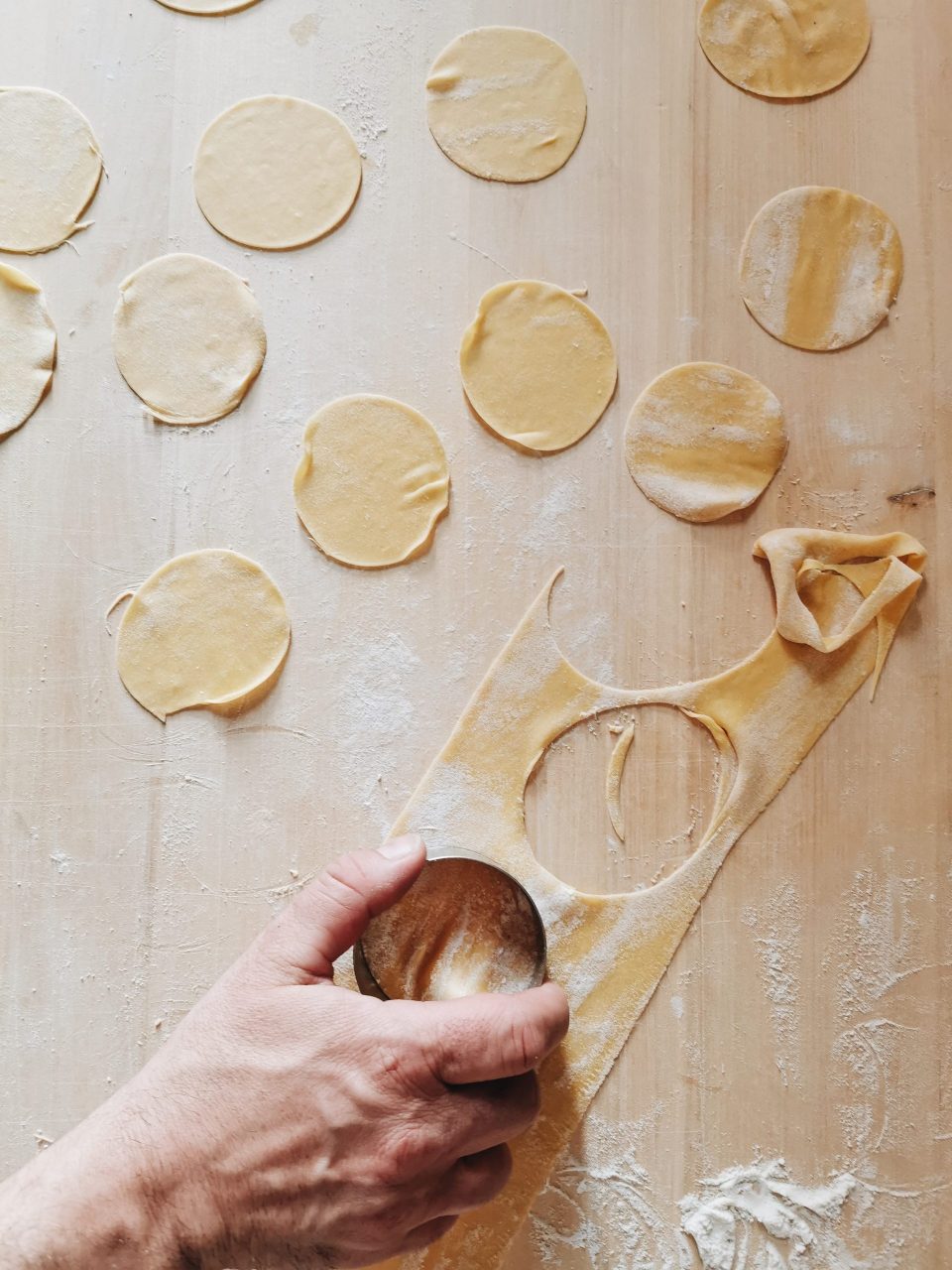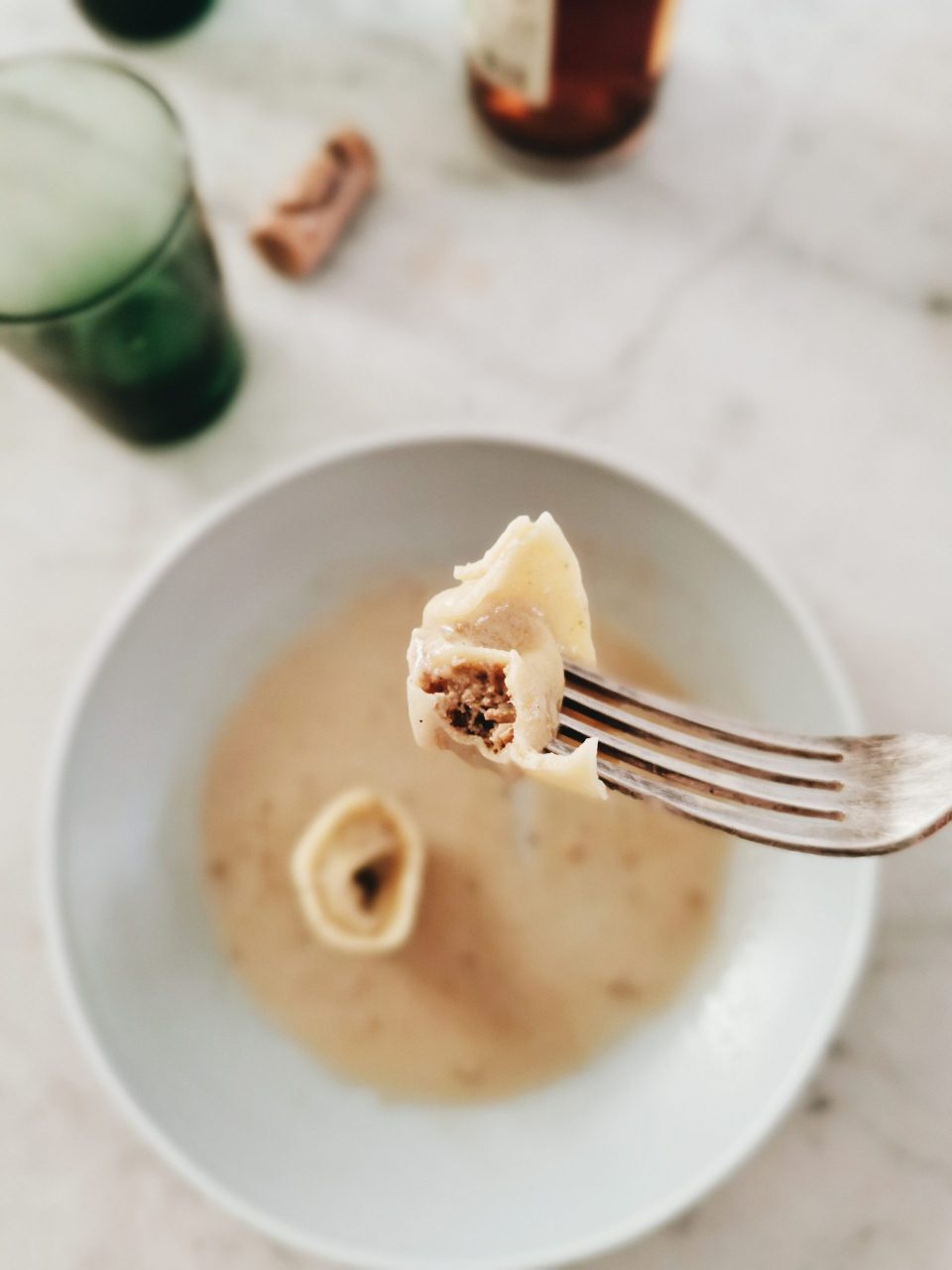
I know, I know, the ingredients might be challenge — chicken combs and testicles aren’t the easiest to obtain or to handle for some — this isn’t for the faint of heart. But I will say that this is a wonderful, divine and very special dish with an incredible Florentine history, and I think in today’s context is still extremely relevant as a sustainable and respectful choice for omnivores who care about eating for the planet.
I wrote a lot more about that for my newsletter, which you can see here, but I think it is still the same argument I have been making for the ten years I’ve had this blog — that eating offal is important as a conscientious onminvore, and now more than ever.
And aside from that argument, the other reason you should try this is because it is simply divine. Catherine de’ Medici was so fond of it she almost made herself sick from eating too much of it, the story goes. And in fact the first thing I noticed about this dish that the Florentine Queen of France was so enamoured of, is how incredibly luxurious it tastes — creamy, delicate, melt in the mouth. You could easily imagine it eaten with truffles (as chicken combs were often prepared with in French cooking). This is no peasant dish. This is something special. In Florence today, you’ll be hard pressed to find many restaurants and trattorie serving this historical dish, but one place that is famous for it is Enoteca Pinchiorri, Florence’s only three Michelin star restaurant. So that should give you a hint, too, at what kind of dish we are talking about here.
Below you’ll find the traditional recipe for Cibrèo and a recipe that turns into a stuffing for cappelletti pasta, a dish that was so good my husband Marco was moved to tears!

Cibrèo
This refined, classic Florentine dish could be served as antipasto or a main, here the proportions for four would make it a main dish. This recipe is adapted from Paolo Petroni’s Il Libro della Vera Cucina Italiana.
For 4 people
- 1 cockscomb and wattle (the fleshy hanging part under the beak)
- 1 ½ tablespoons of butter
- 2 tablespoons olive oil
- 4-6 leaves of sage
- 1 small onion, finely sliced or chopped
- 60 ml (¼ cup) dry white wine
- 120 grams chicken livers, halved
- flour for dusting
- 70 grams chicken hearts, halved lengthways
- 70 grams chicken testicles
- grating of fresh nutmeg
- 250 ml of stock
- 2 egg yolks
- juice of ½ lemon
Blanch the crest and wattle in boiling water for a minute or two then remove, and when cool enough to handle, scrape off the fine, papery skin, then chop into bite sized pieces.
In a pan, melt the butter with olive oil over low heat and add the sage and onion, cooking until the onion is translucent and softened but not coloured, about 5-7 minutes, then turn up the heat to low-medium, add the crest and wattle, followed by the white wine and cook for 15 minutes.
Dust the livers in flour to cover, then add them together with the hearts and testicles, to the pan. Season with salt, freshly ground pepper and nutmeg and continue cooking for another 15 minutes, adding stock to the pan as you need to keep braising the chicken.
In a small bowl, whisk together the yolks and lemon juice. Add a splash of stock too, then pour it over the pan and stir gently for a minute to allow the yolk to thicken then serve immediately with more freshly ground black pepper and plenty of crusty bread to mop up the sauce.

Cappelletti di cibrèo
If you want to get fancy or propose this dish in another way and turn it into pasta, an idea inspired by a wonderful meal of ravioli di finanziera (a similar dish of offal and chicken crests) at Ristorante Consorzio in Torino, we made cappelletti (you could also do simpler ravioli following the method here but I think you’ll agree the cappelletti are adorable). I like to use a dough really rich in egg yolks for making filled pasta, hence the number of yolks required here. If you’re wondering what to do with all the egg whites, I love Edna Lewis’ egg white pound cake.
- 400 g plain (all-purpose) flour, plus more for dusting
- 2 eggs, plus 5 yolks (set aside 1 egg white for later)
- 2 tablespoons water
- 60 ml (1/4 cup) or so of stock (or water) for reheating the sauce if necessary
- 50 grams cold butter
- Freshly ground pepper
Put the flour in a bowl and make a well in the centre. Place the eggs, 4 of the yolks (save one for the filling) and water in the well. With a fork, begin to whisk the eggs, incorporating the flour little by little until you can no longer whisk with the fork. Use floured hands to combine the rest of the flour until you have a smooth, elastic dough. Wrap in plastic wrap or pop under a bowl on the bench and let it rest at least 30 minutes.
Strain the Cibrèo (warmed if necessary) to separate the sauce from the rest of the ingredients. Set aside the sauce and blend the rest of the ingredients in a food processor with about 50 grams of grated Parmesan cheese so that it is stiffer, quite like the consistency of ricotta.
Cut the dough into four pieces and dust with flour. Roll out one portion of the dough (I like doing one portion at a time) using a pasta machine or rolling pin, keeping the rest of the dough covered. The dough should be thin enough so that you can see your hand through it. Cut out rounds with a cookie cutter (about 7cm/2 3/4 in in diameter) and roll the scraps back up into a ball (you can roll this back out later) and keep these on a wooden board dusted with flour while you finish cutting out the rounds for this portion of dough.

With two teaspoons, scoop a teaspoon of filling onto the centre of each round. Have a little bowl of water handy (or use the extra egg white) and dip your finger into this and then wet the edge of the pasta all the way around. Now fold the round into a half moon, squeezing out gently any air from inside, then fold the two ends of the half moon to meet each other in the middle — and there you have your first cappelletto!
Continue with the rest of the rounds, setting aside the finished cappelletti on a wooden board dusted with flour (alternatively you can place them on a baking tray lined with parchment paper). Then continue with rolling out the next portion of dough and so on.

You can store this pasta in the fridge for a few hours until you are ready to cook, or you can cook them right away.
To cook the cappelletti, gently tumble them into a pot of simmering, salted water. They will take only about 2 minutes to cook. In the meantime, heat up the sauce very gently with a splash of water or stock and once warm, add cold butter and turn off heat, swirling until it melts. Drain and plate the cappelletti, then distribute the sauce over the top of each dish and finish with plenty of freshly ground pepper. Marco loved pairing this with a glass of dessert wine (Vin Santo), which is unusual but works incredibly well.





Comments
Certainly! If you have a specific recipe or type of cuisine in mind, feel free to let me know, and I can help you come up with a comment for it. If not, here’s a general comment you can use:
“This recipe is a culinary masterpiece! The flavors dance together in perfect harmony, creating a symphony of taste that tantalizes the taste buds. The step-by-step instructions were easy to follow, making the cooking process a breeze. From the first bite to the last, this dish is a true delight. I’ll definitely be making it again and sharing it with friends and family. Thank you for sharing this culinary gem!”